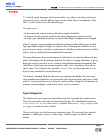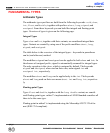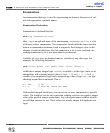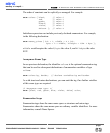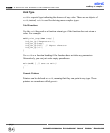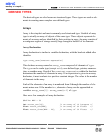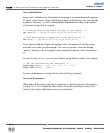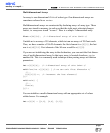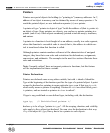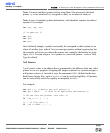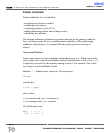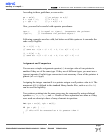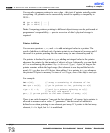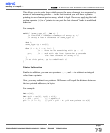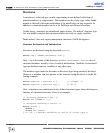
Multi-dimensional Arrays
An array is one-dimensional if it is of scalar type. One-dimensional arrays are
sometimes referred to as vectors.
Multidimensional arrays are constructed by declaring arrays of array type. These
arrays are stored in memory in such way that the right most subscript changes
fastest, i.e. arrays are stored “in rows”. Here is a sample 2-dimensional array:
float m[50][20];
/* 2-dimensional array of size 50x20 */
Variable m is an array of 50 elements, which in turn are arrays of 20 floats each.
Thus, we have a matrix of 50x20 elements: the first element is m[0][0], the last
one is
m[49][19]. First element of the 5th row would be m[0][5].
If you are not initializing the array in the declaration, you can omit the first dimen-
sion of multi-dimensional array. In that case, array is located elsewhere, e.g. in
another file. This is a commonly used technique when passing arrays as function
parameters:
int a[3][2][4];
/* 3-dimensional array of size 3x2x4 */
void func(int n[][2][4]) {
/* we can omit first dimension */
//...
n[2][1][3]++;
/* increment the last element*/
}//~
void main() {
//...
func(a);
}//~!
You can initialize a multi-dimensional array with an appropriate set of values
within braces. For example:
int a[3][2] = {{1,2}, {2,6}, {3,7}};
MikroElektronika:
Development
tools
-
Books
-
Compilers
67
page
mikroC
- C Compiler for Microchip PIC microcontrollers
mikroC
making it simple...



